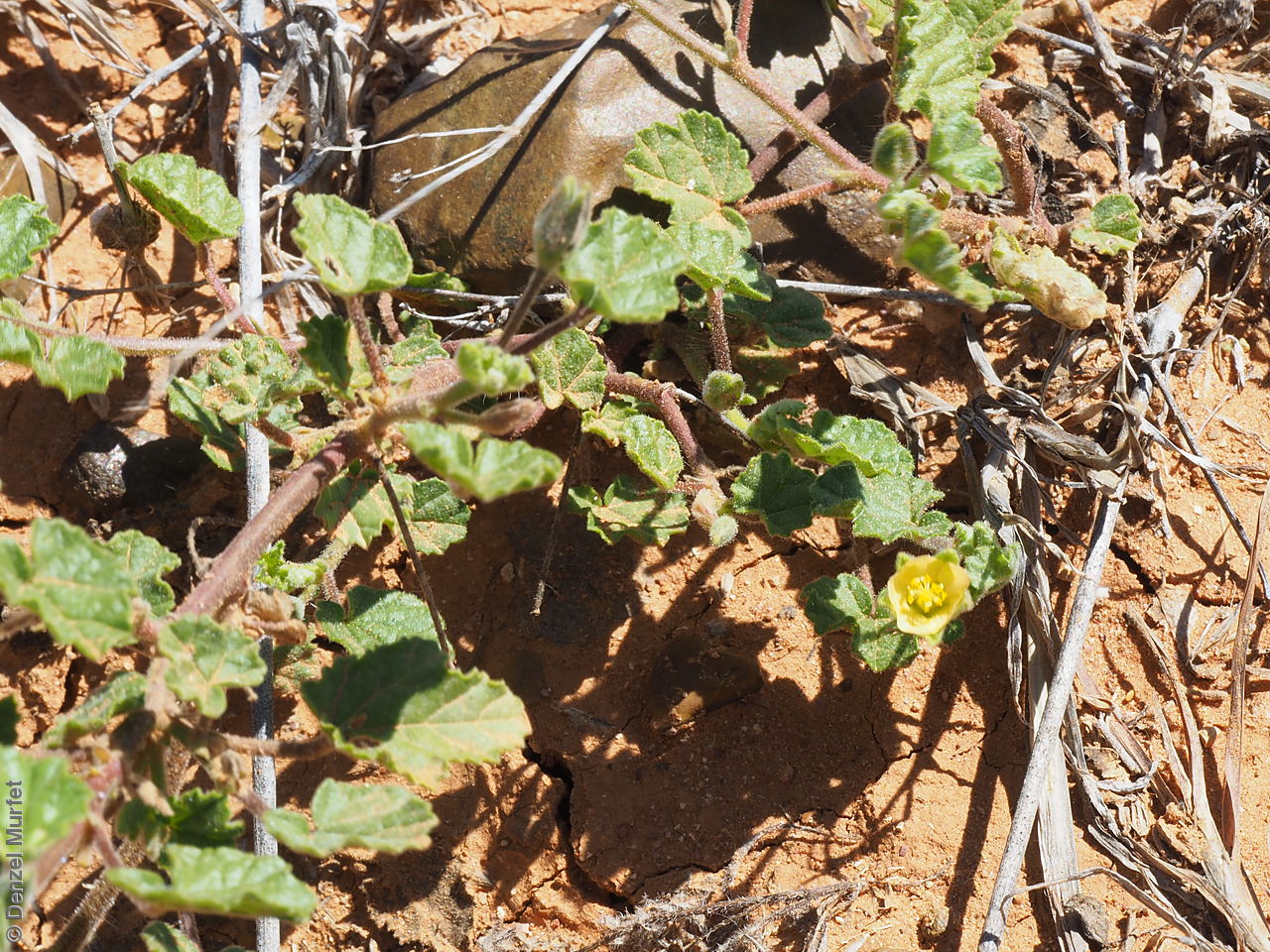
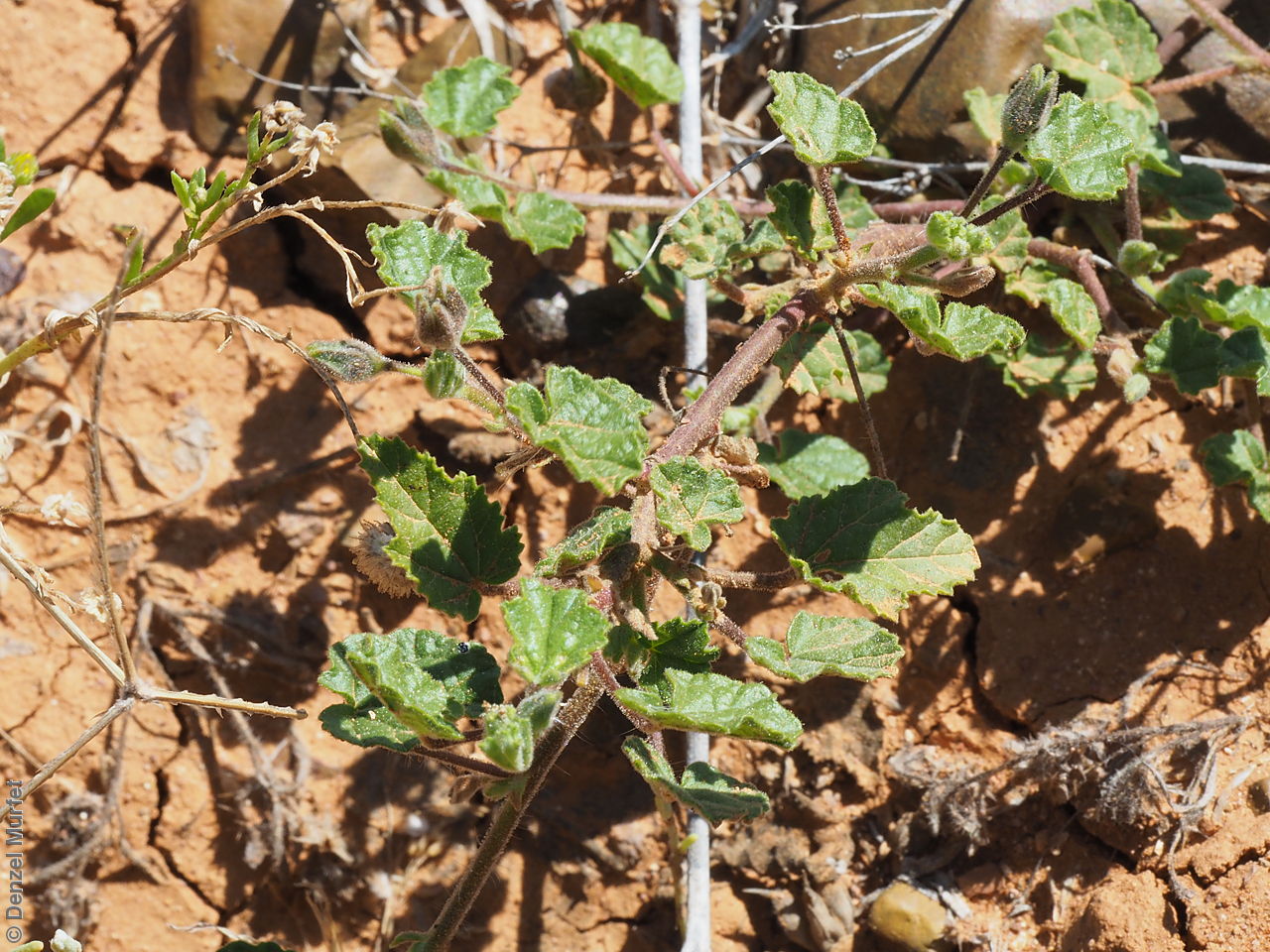
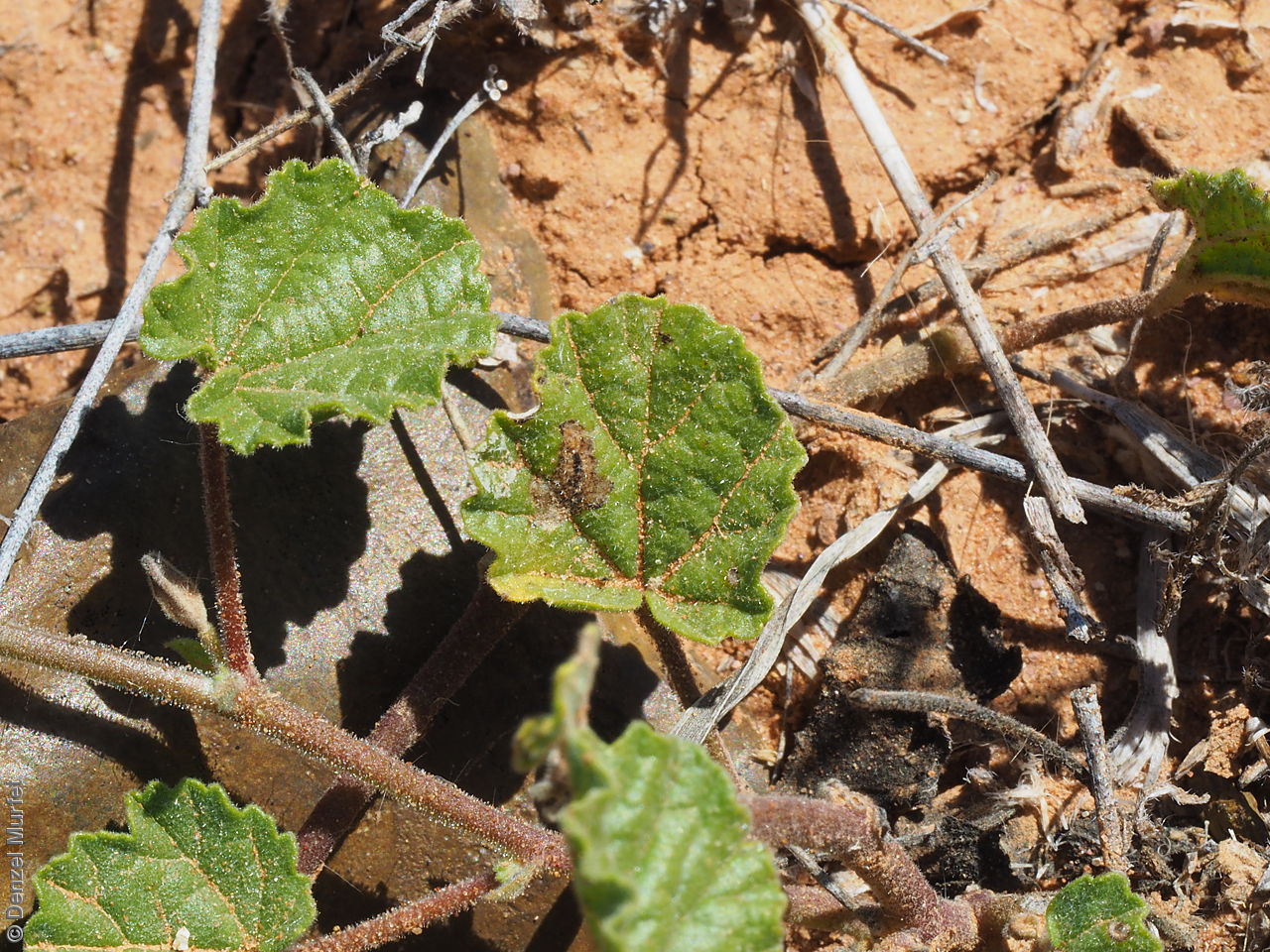
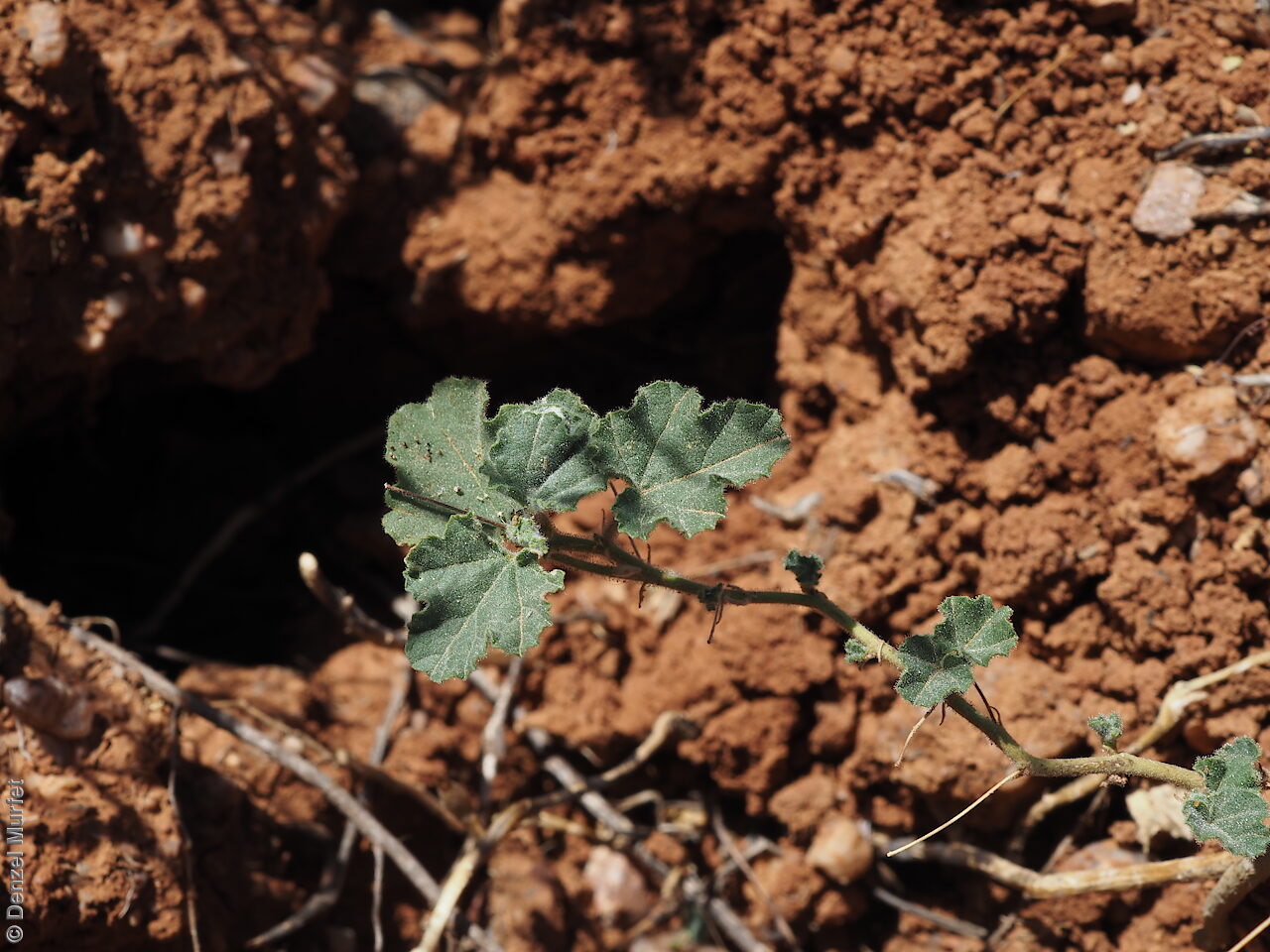
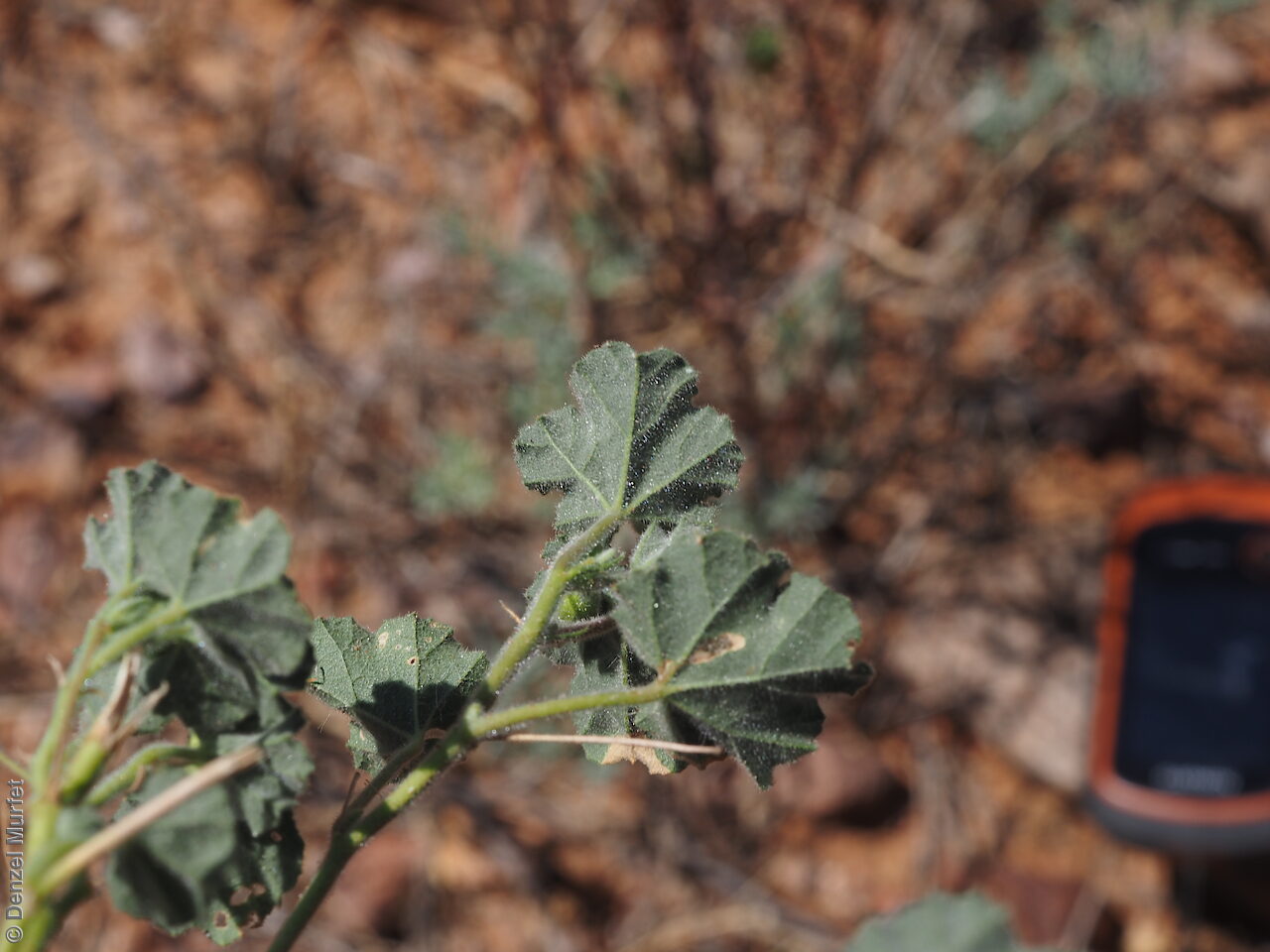
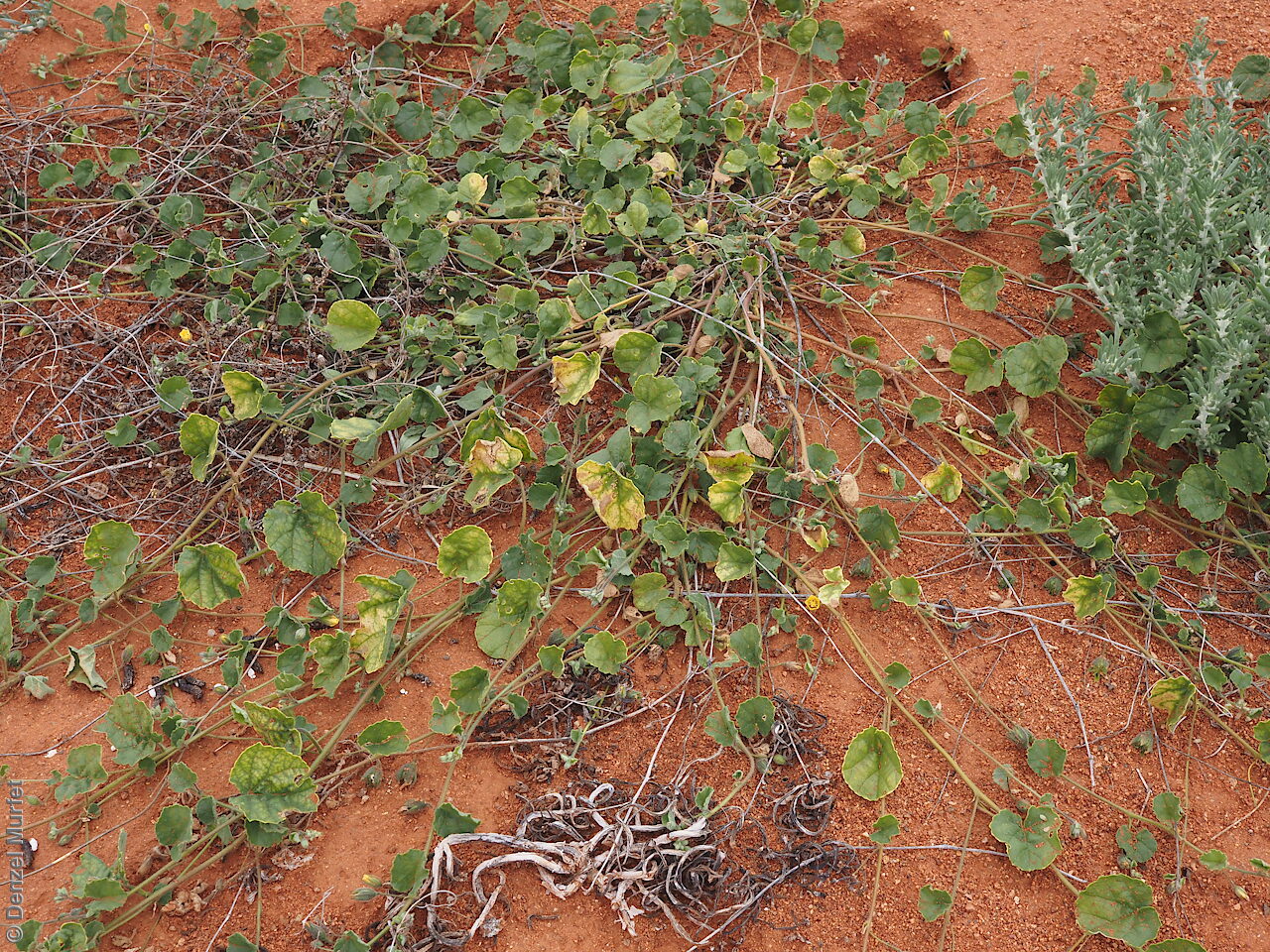
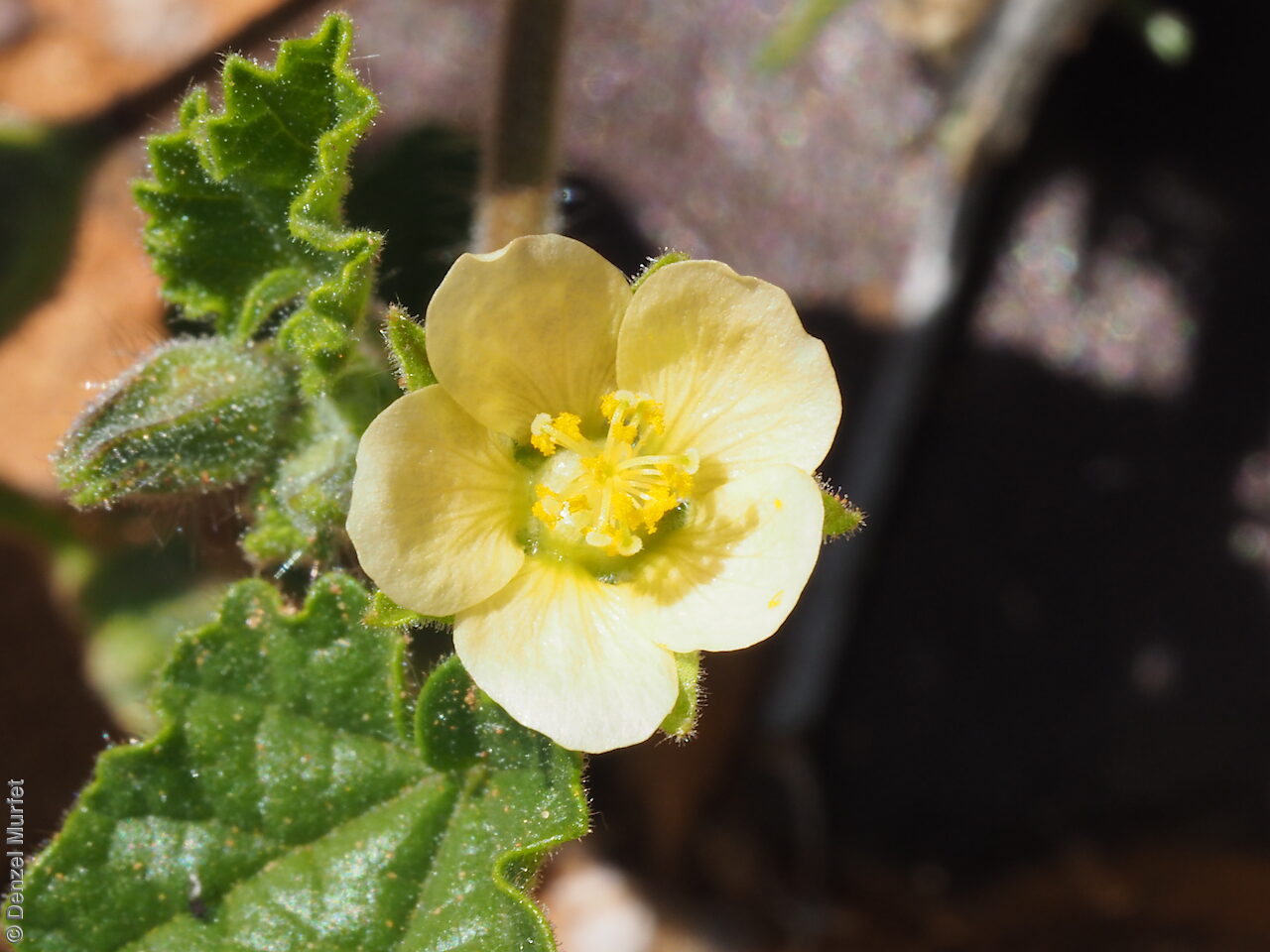
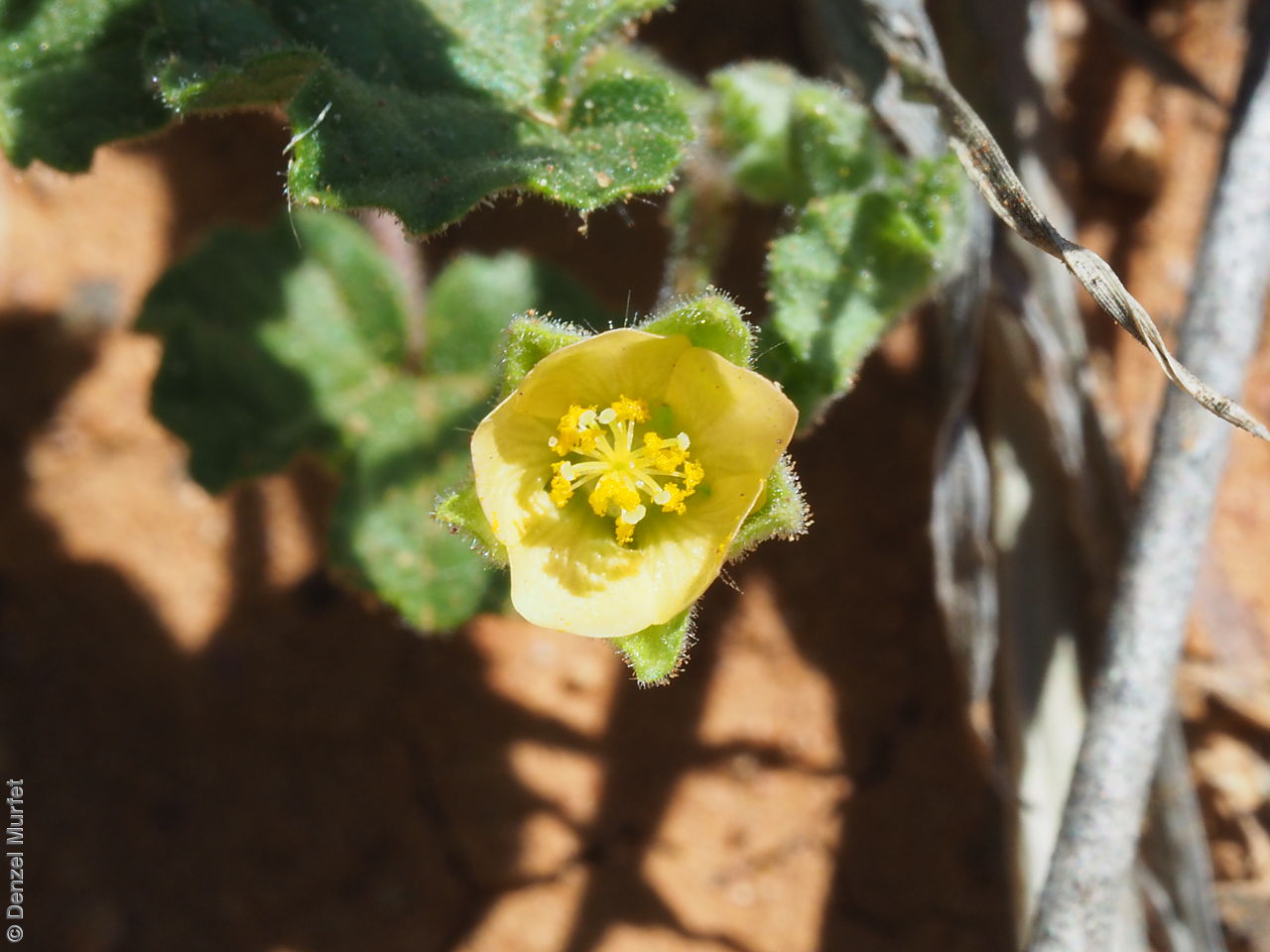
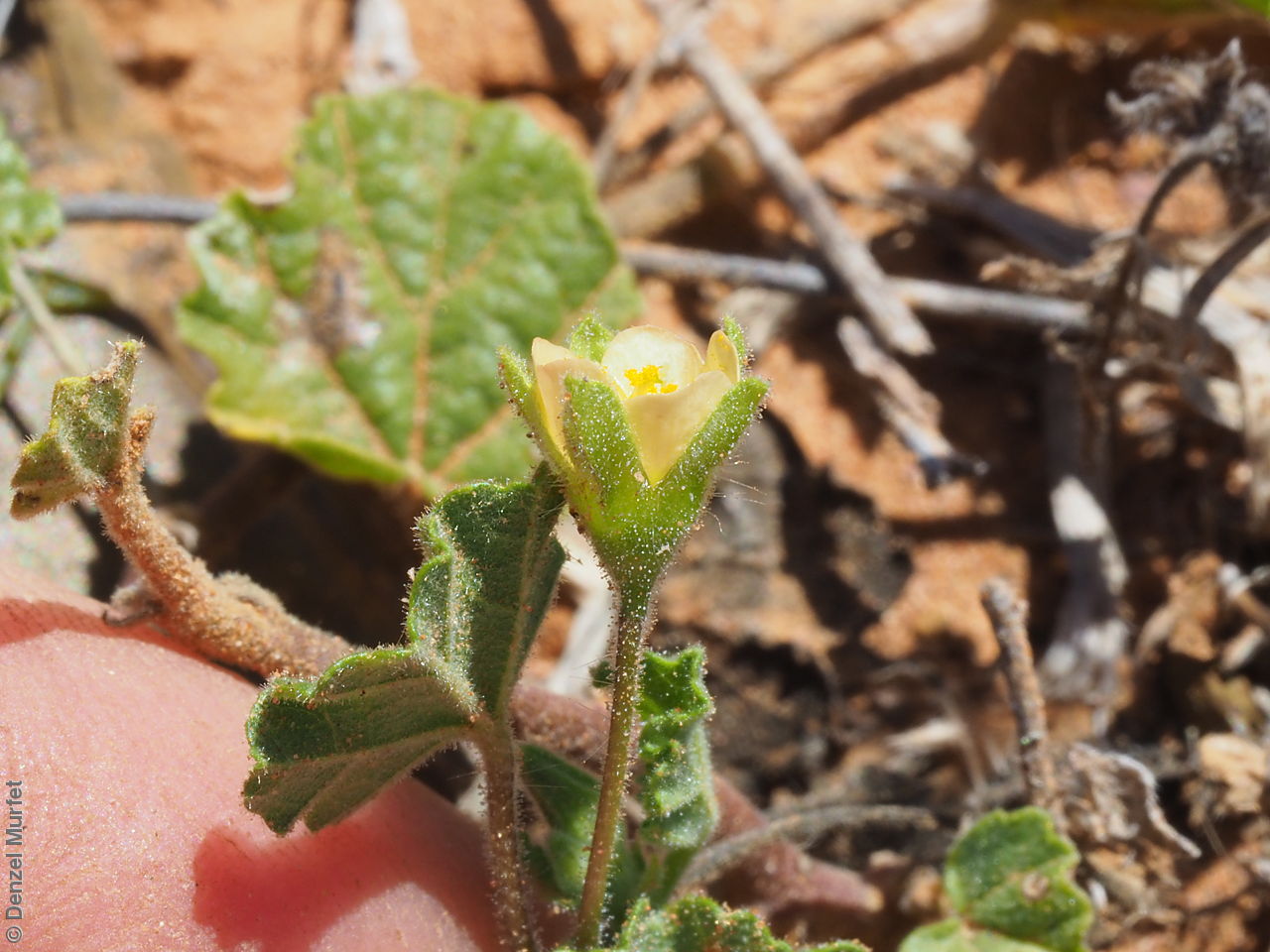
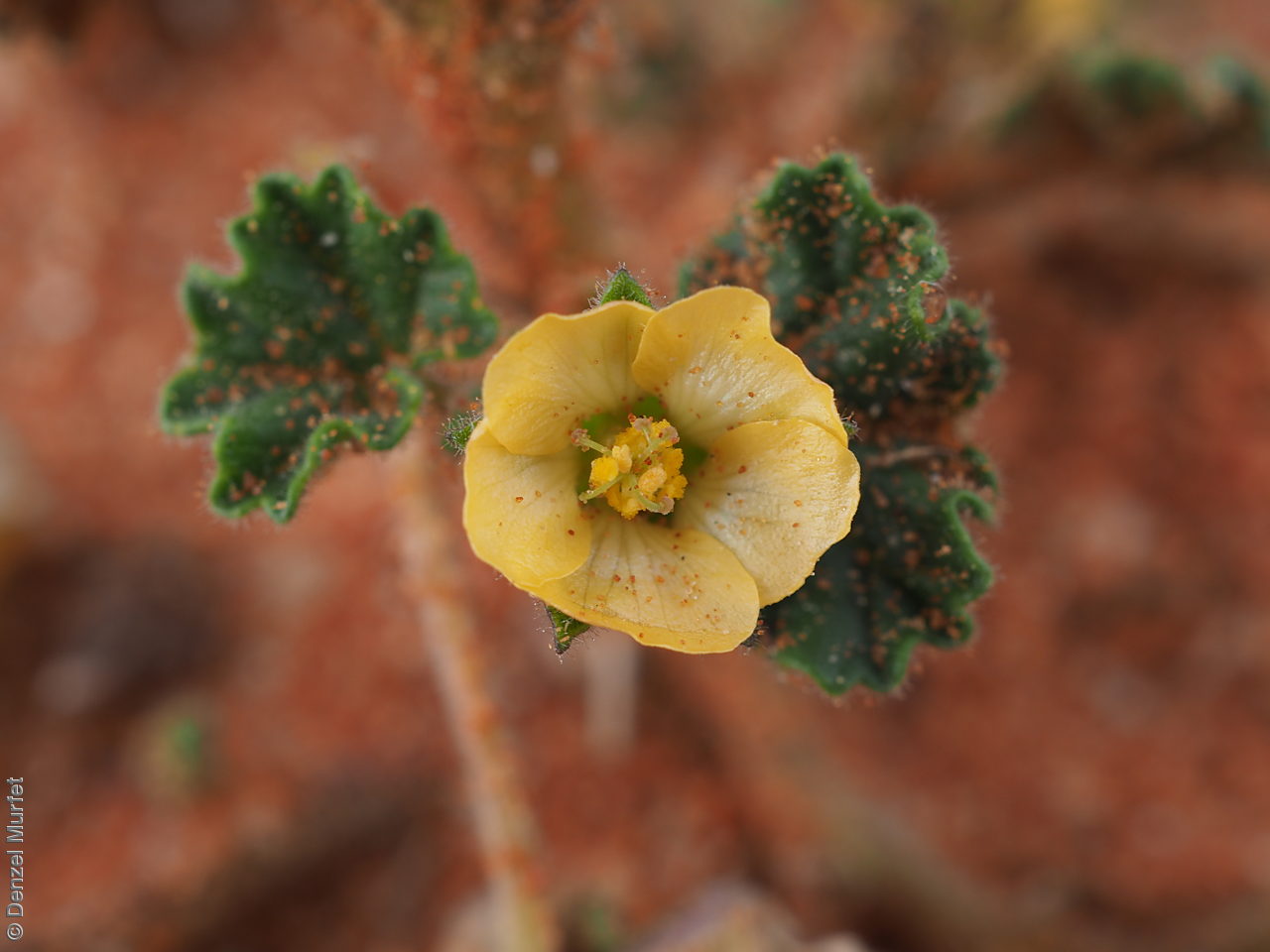
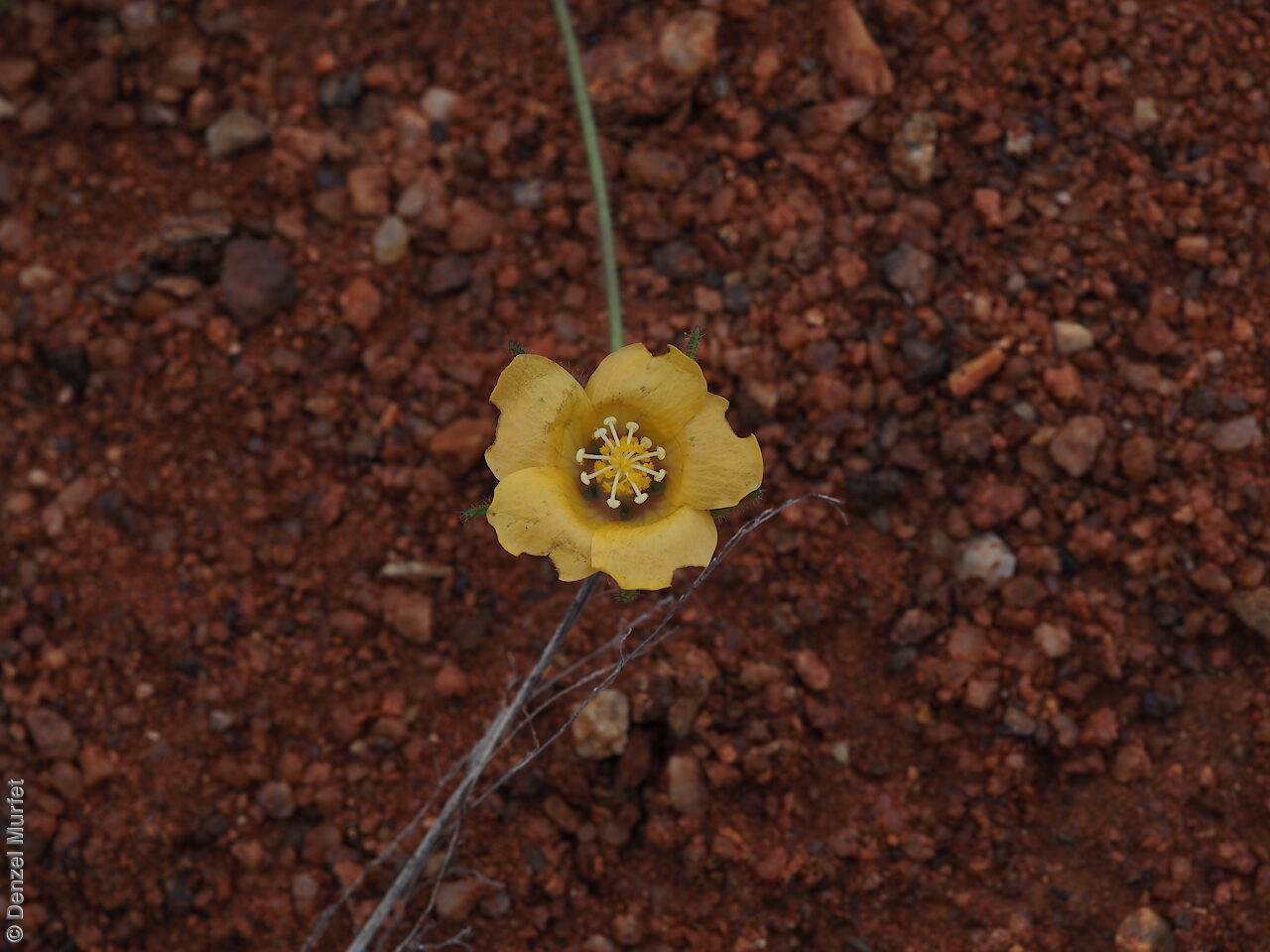
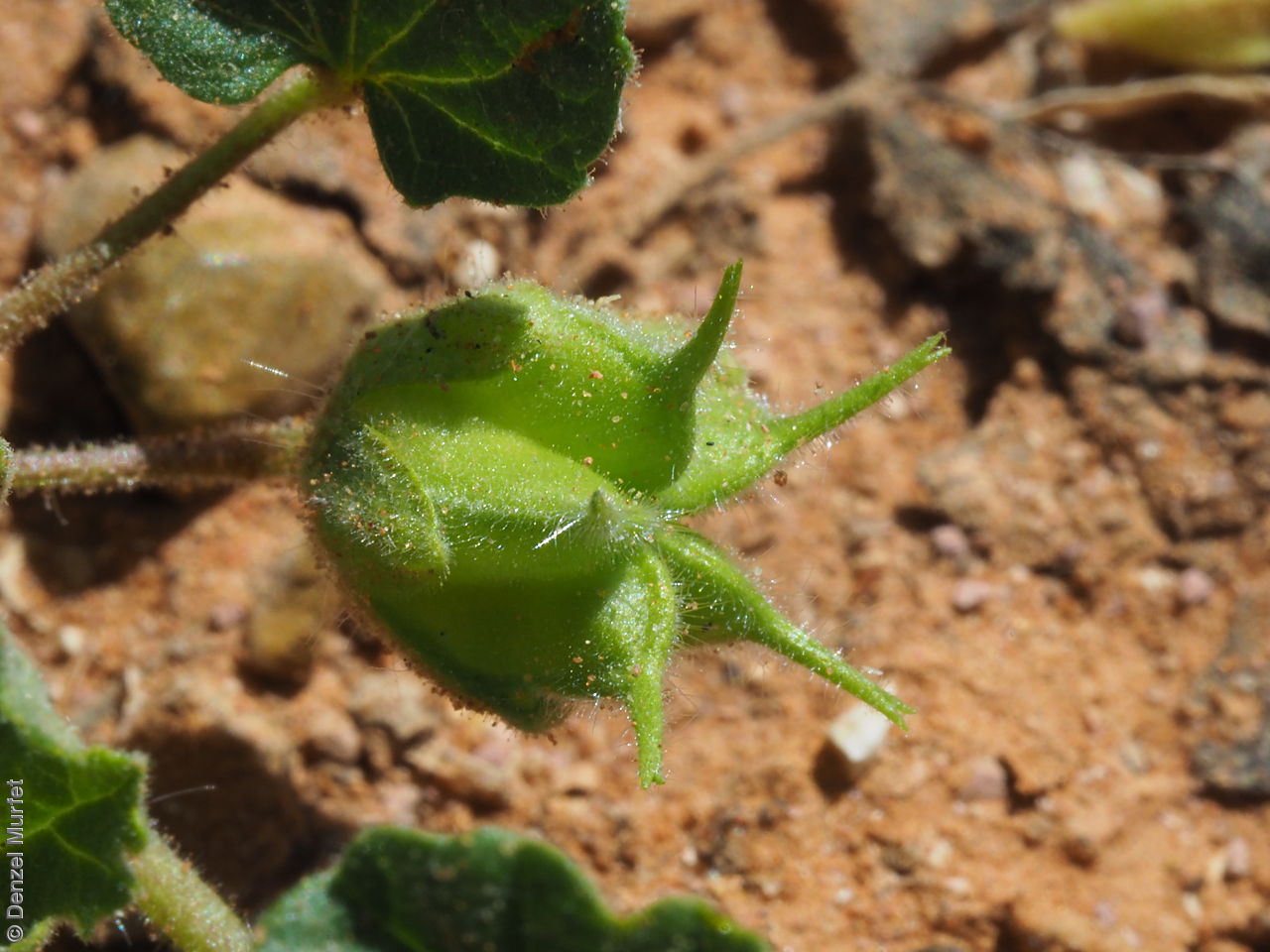
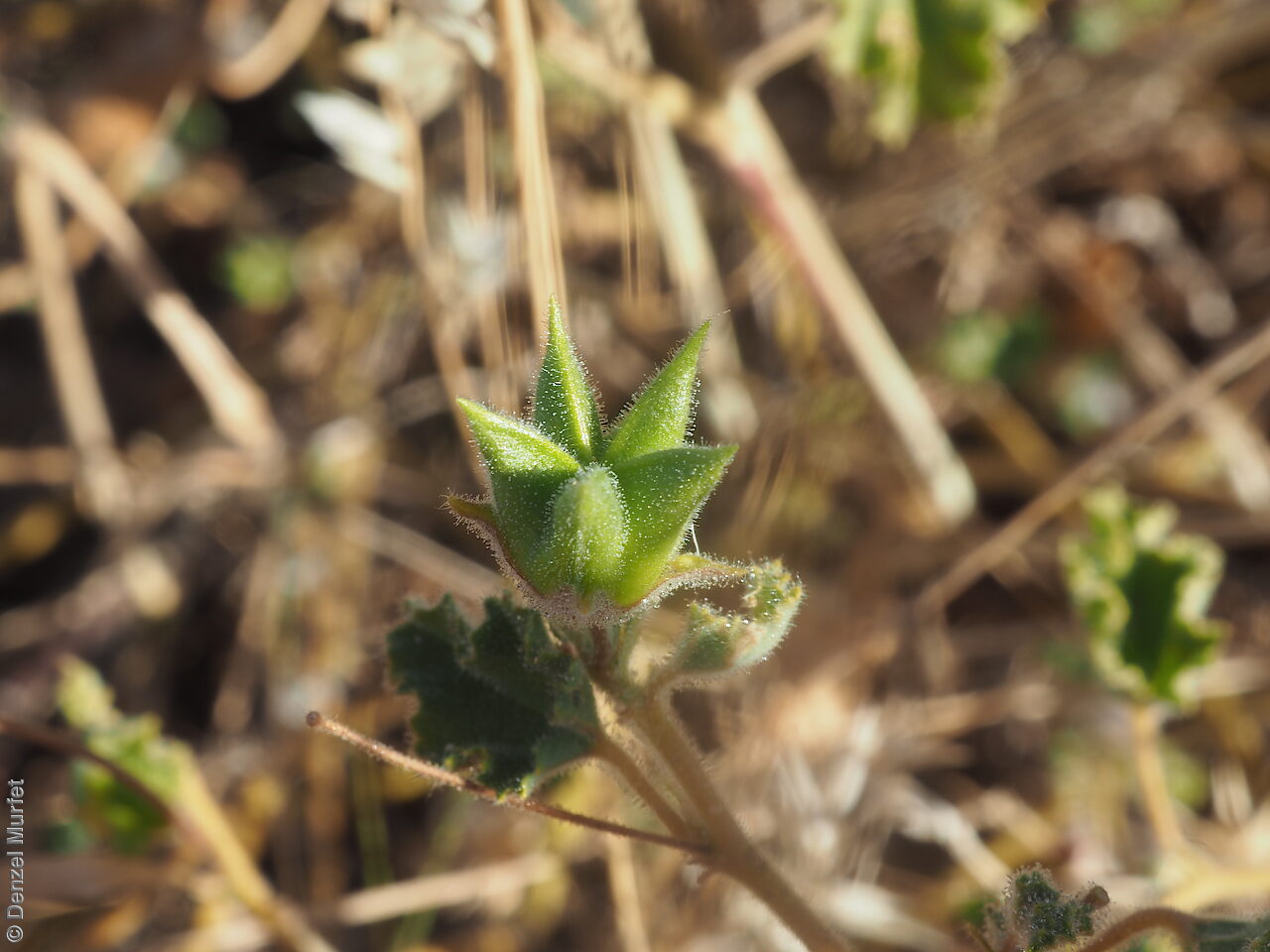
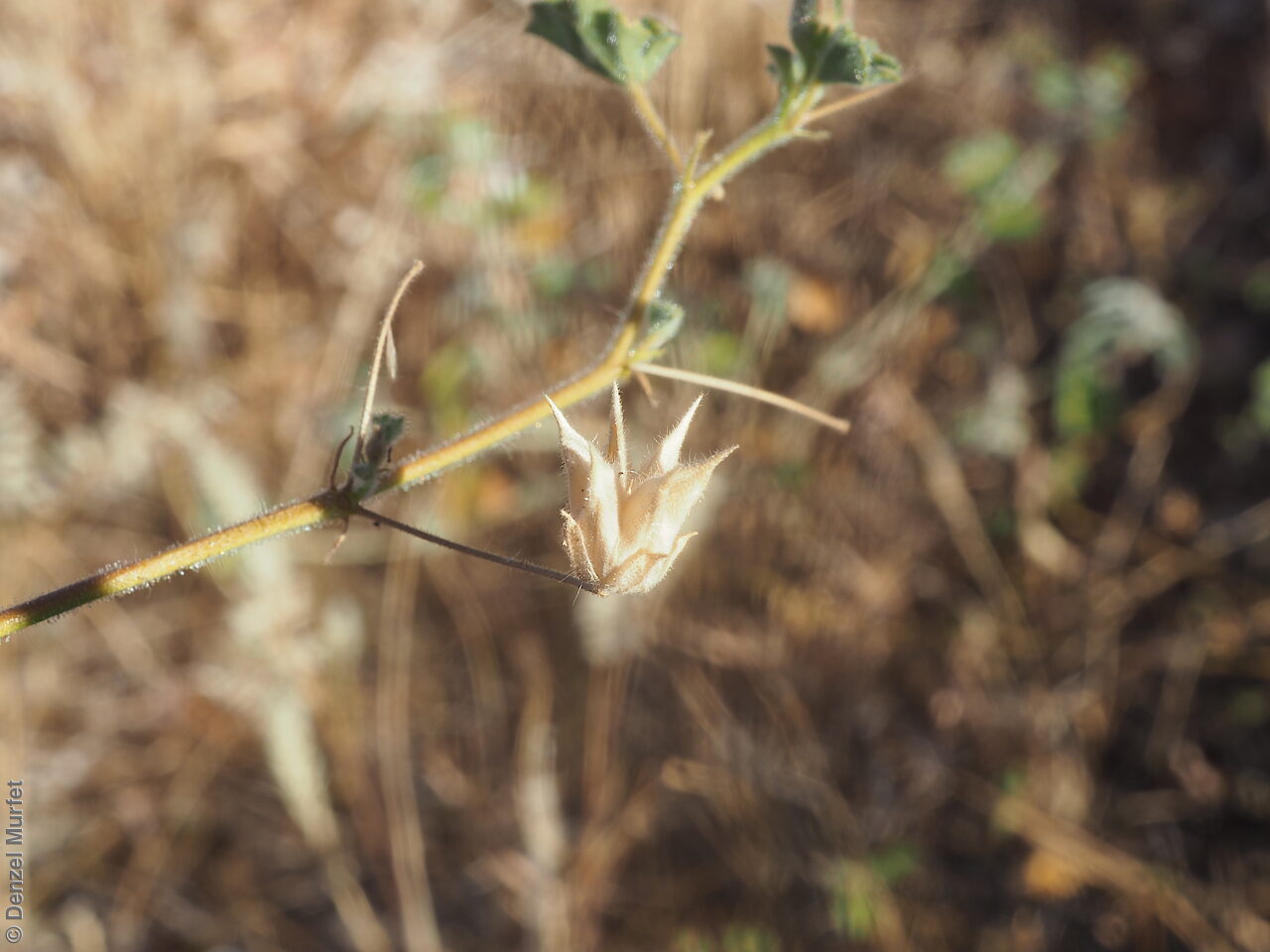
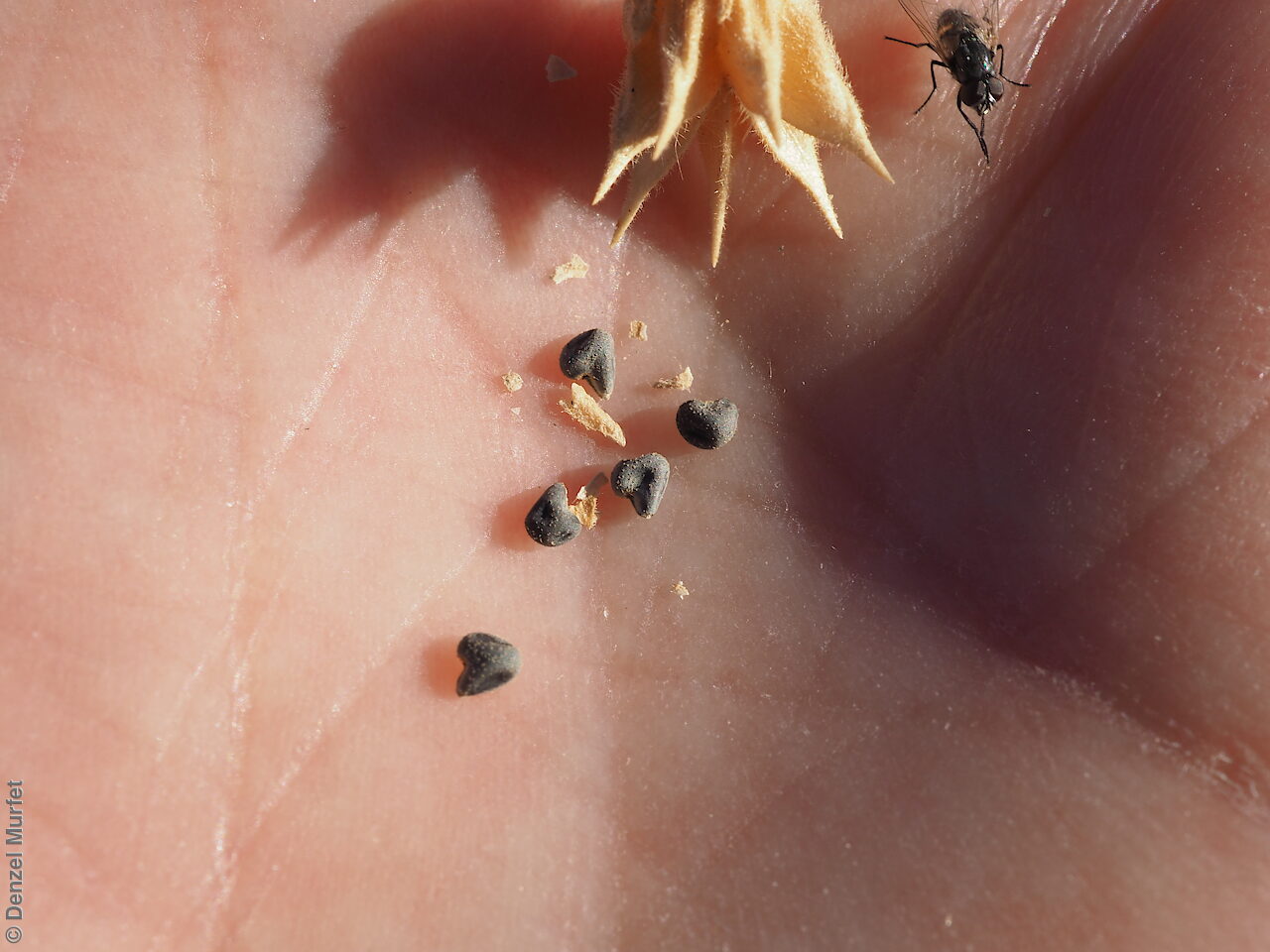
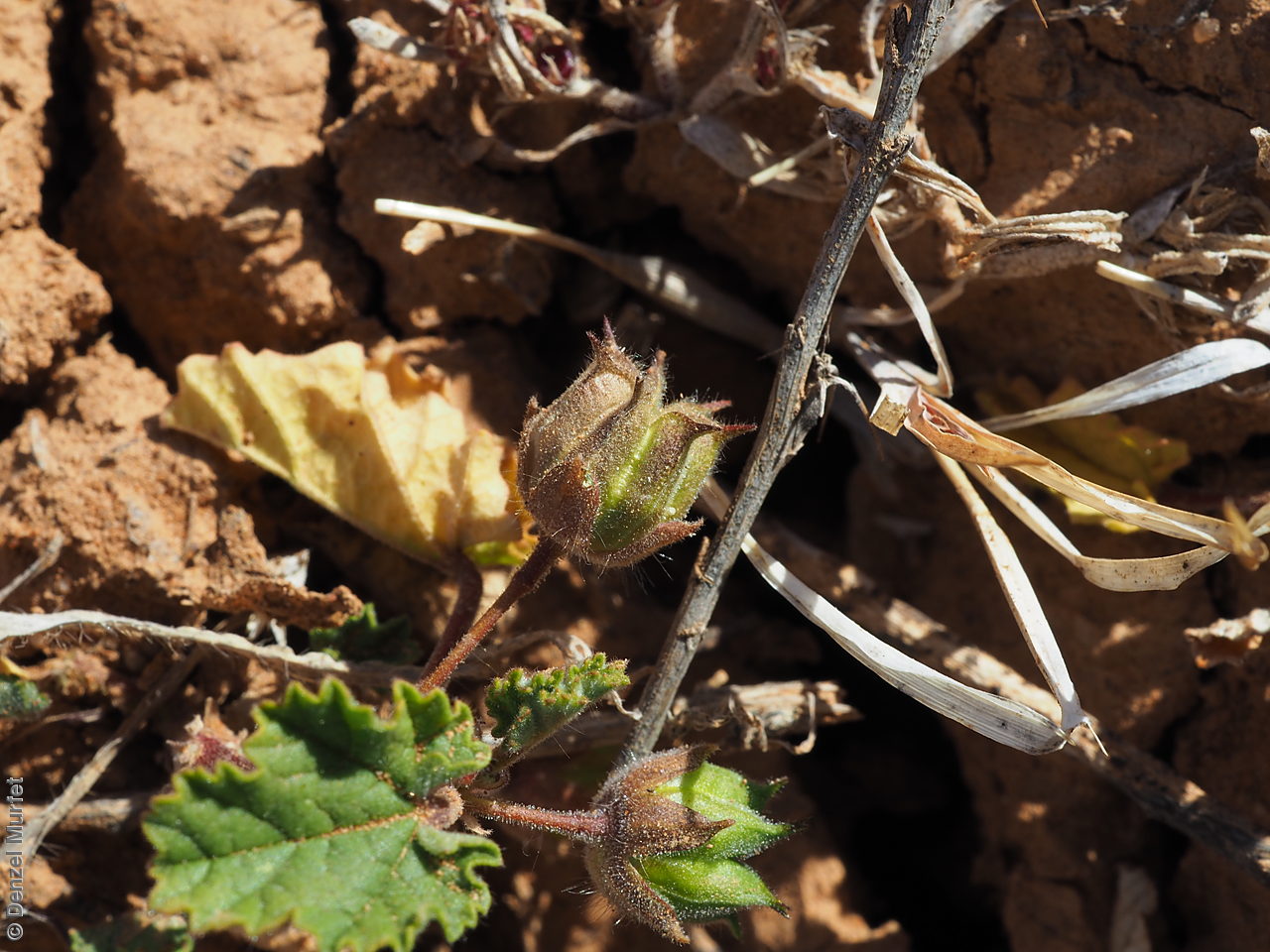
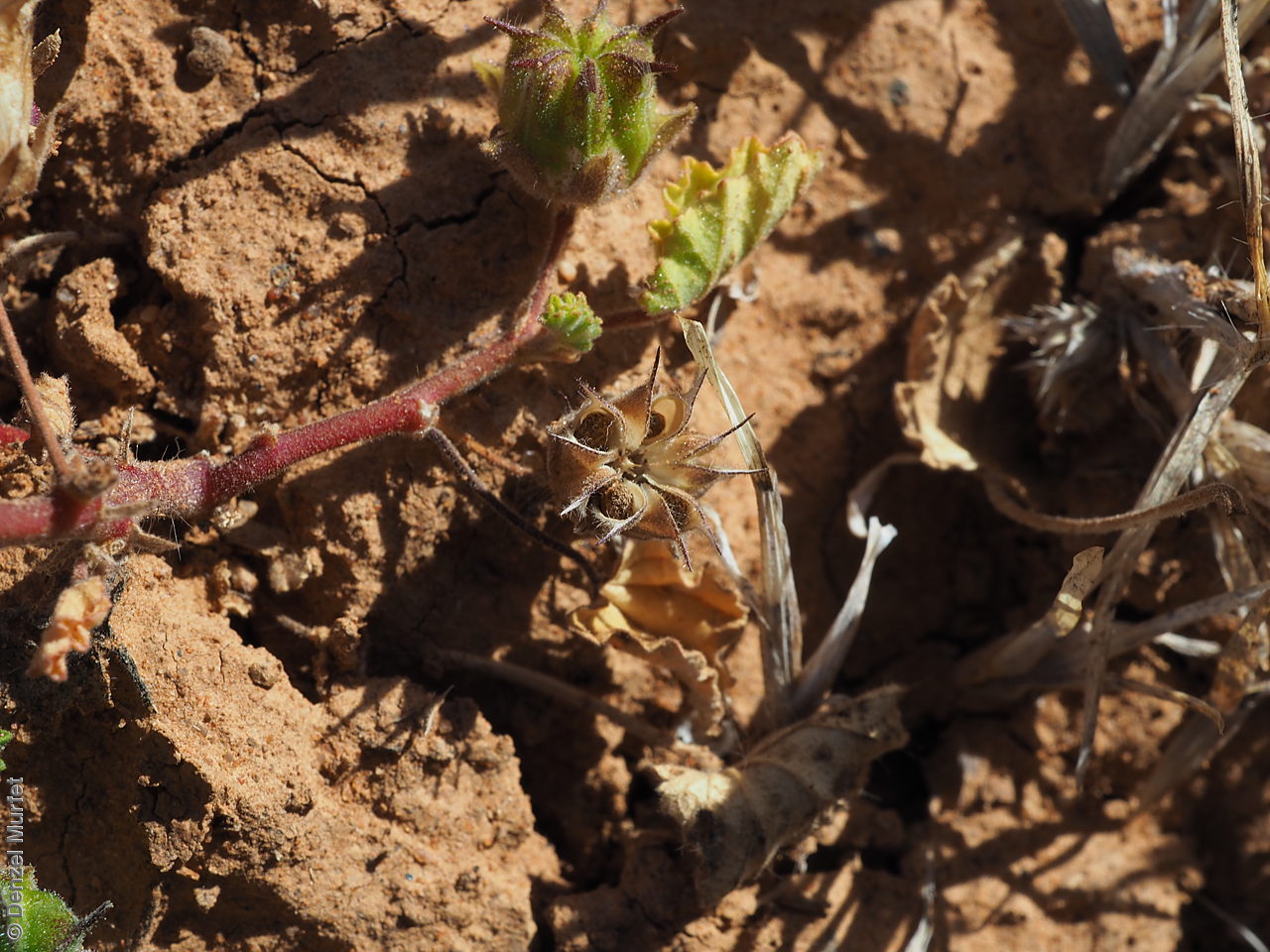
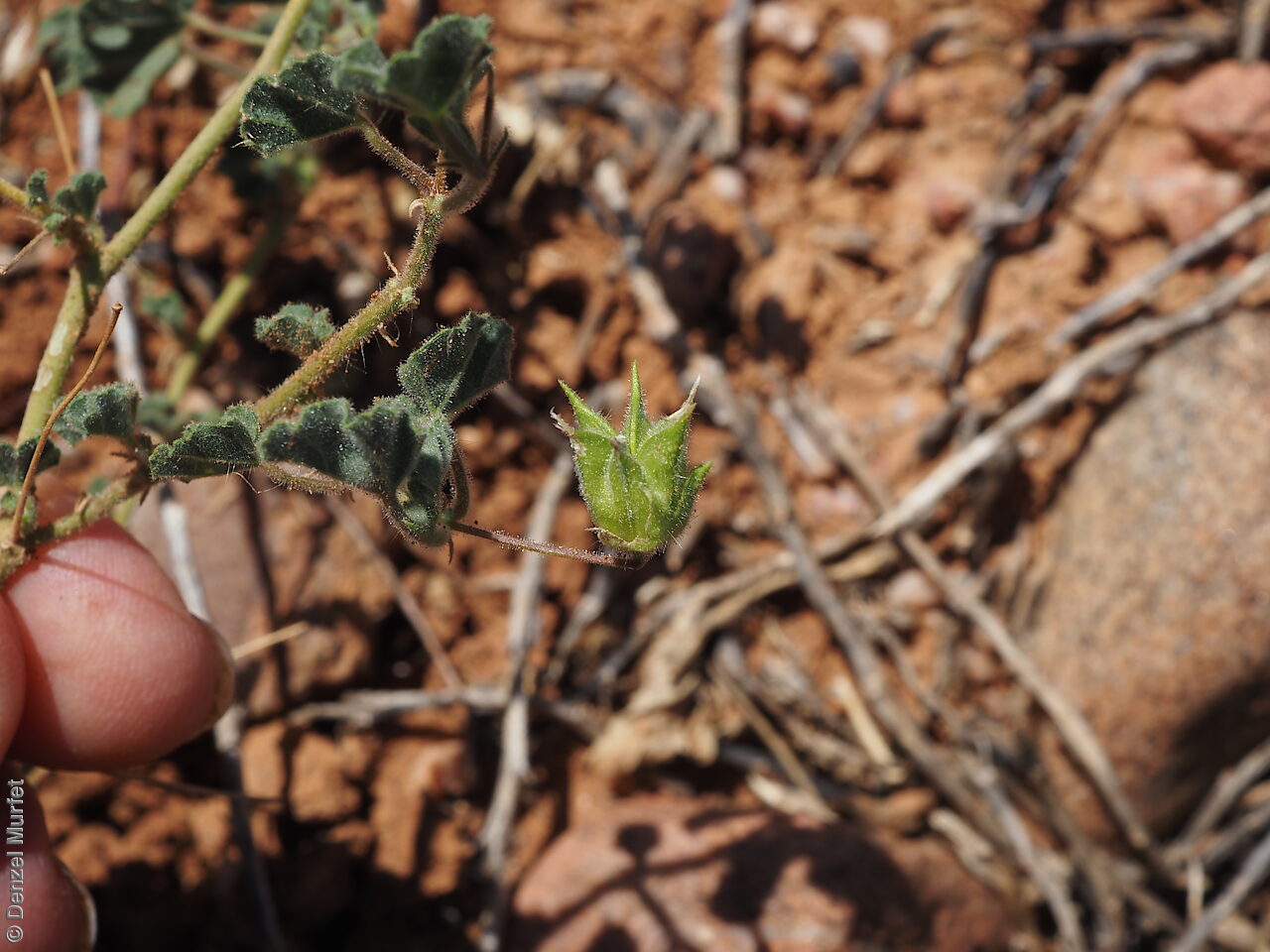
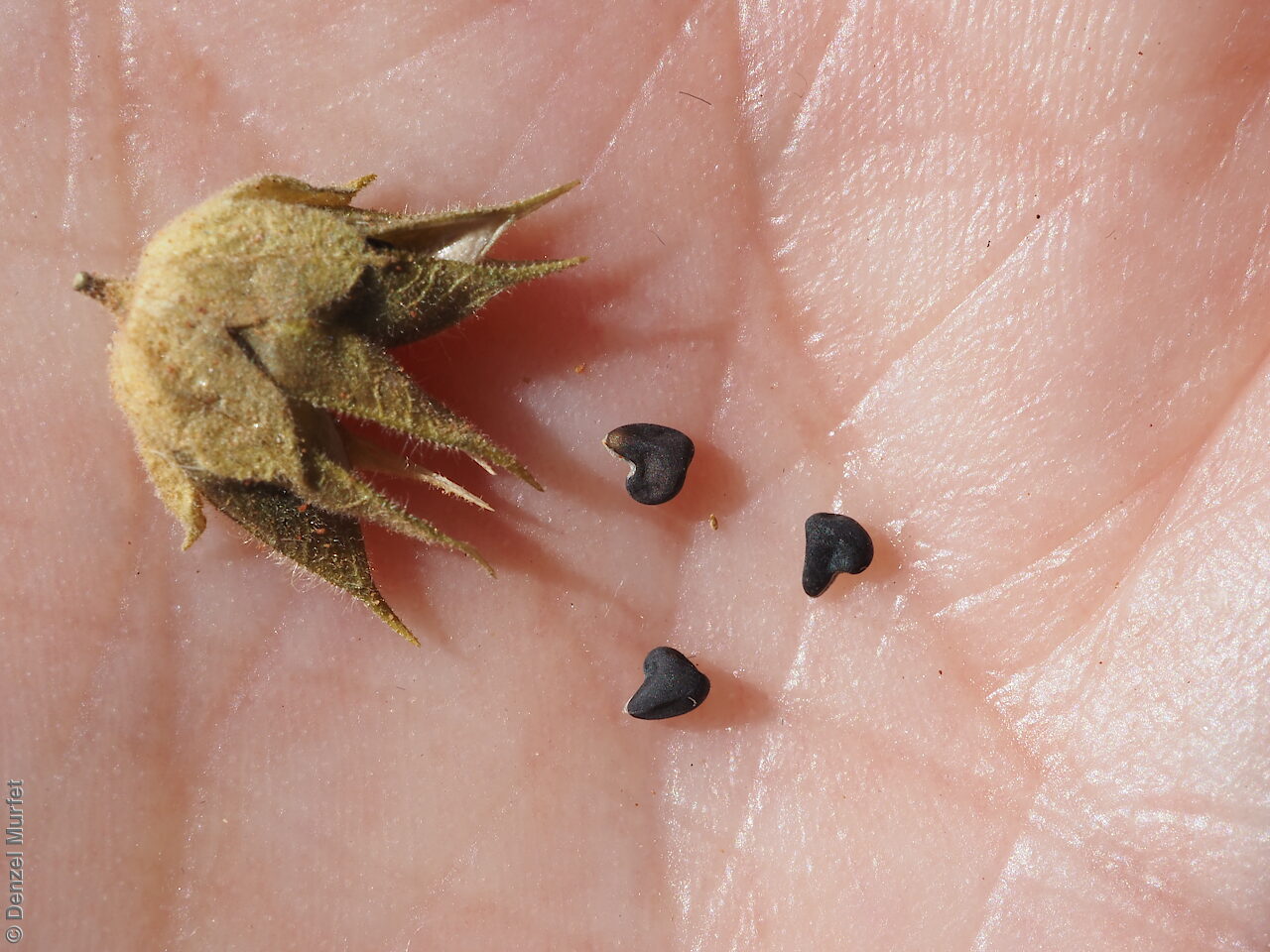
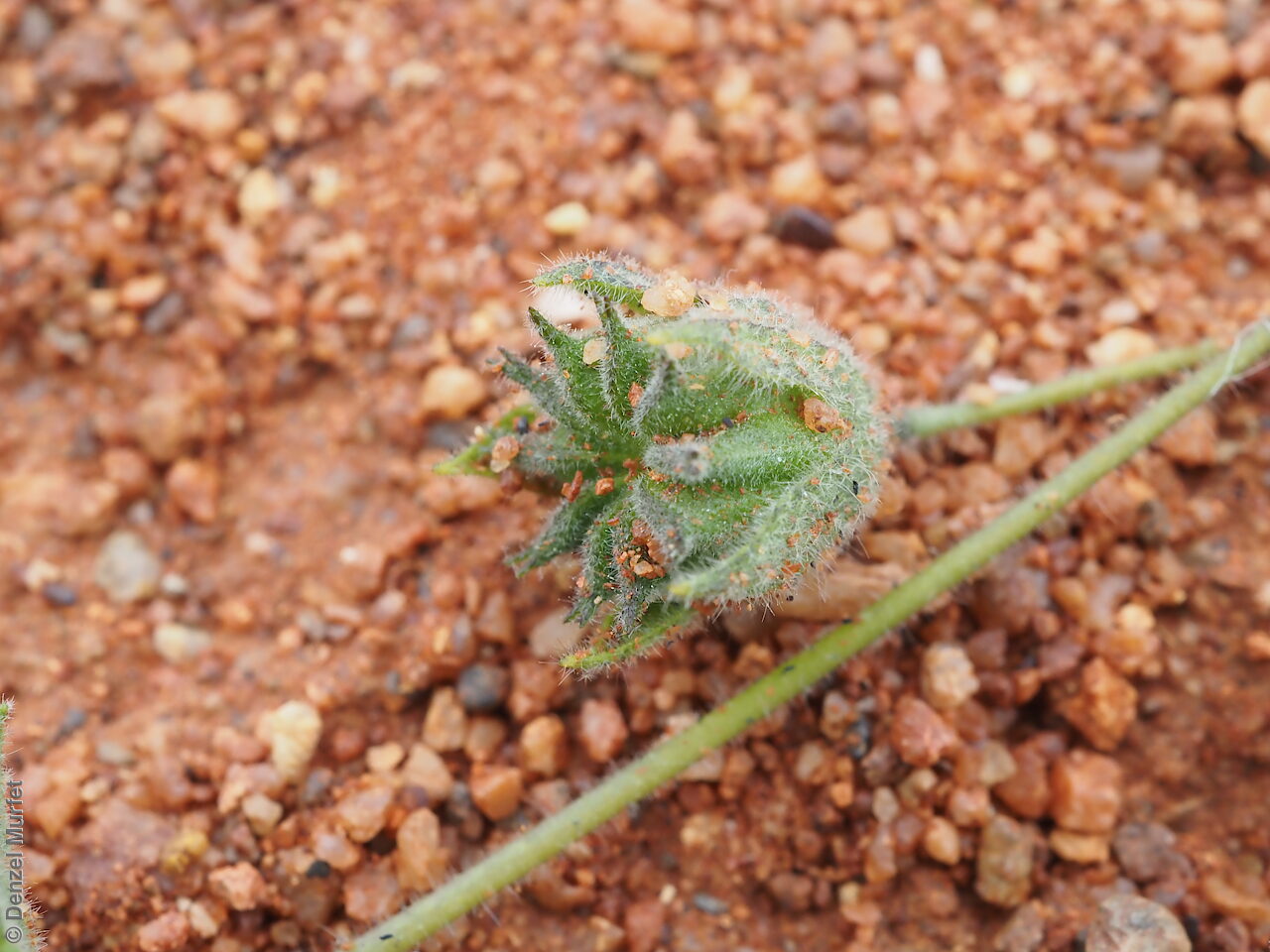
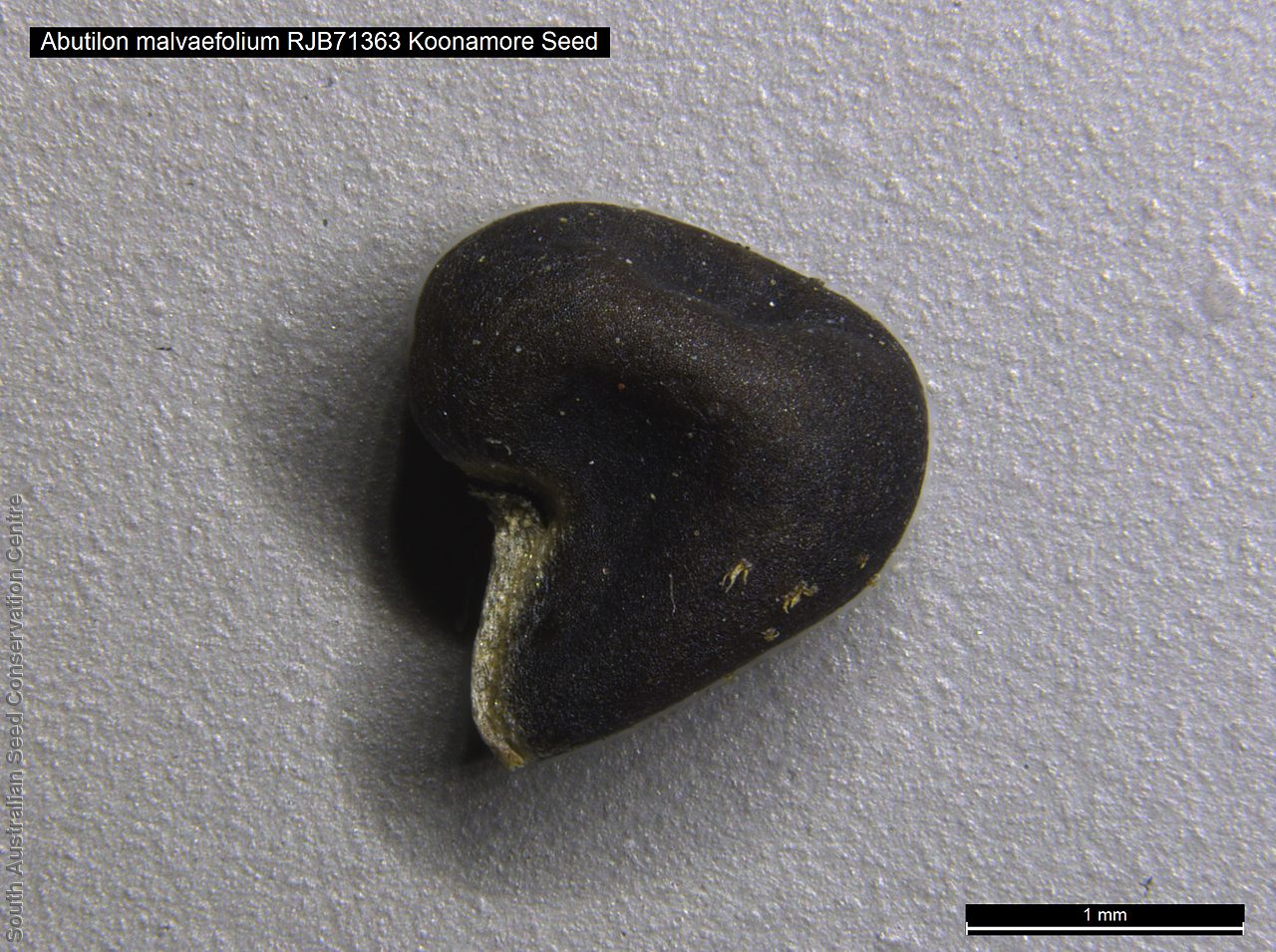
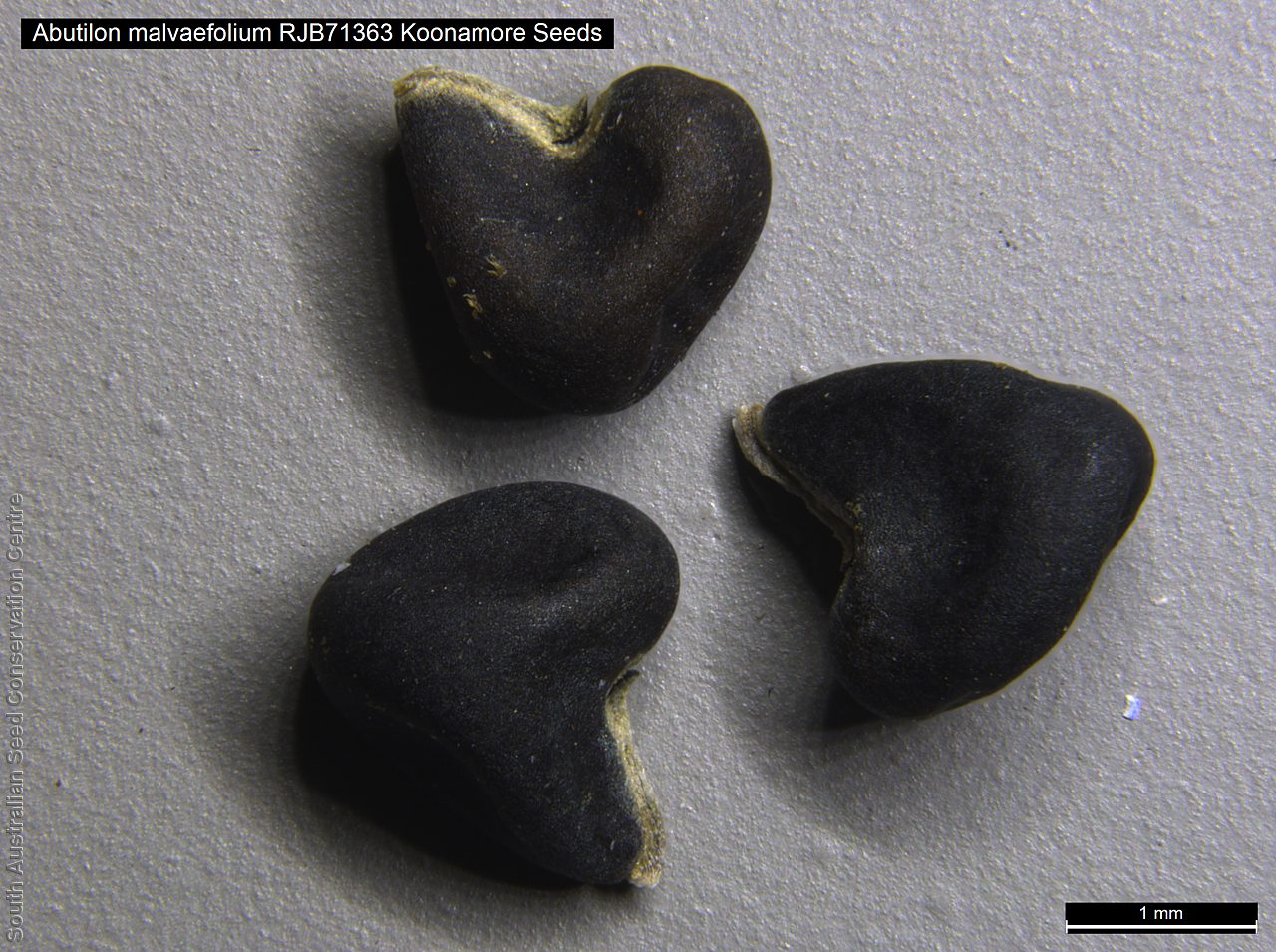
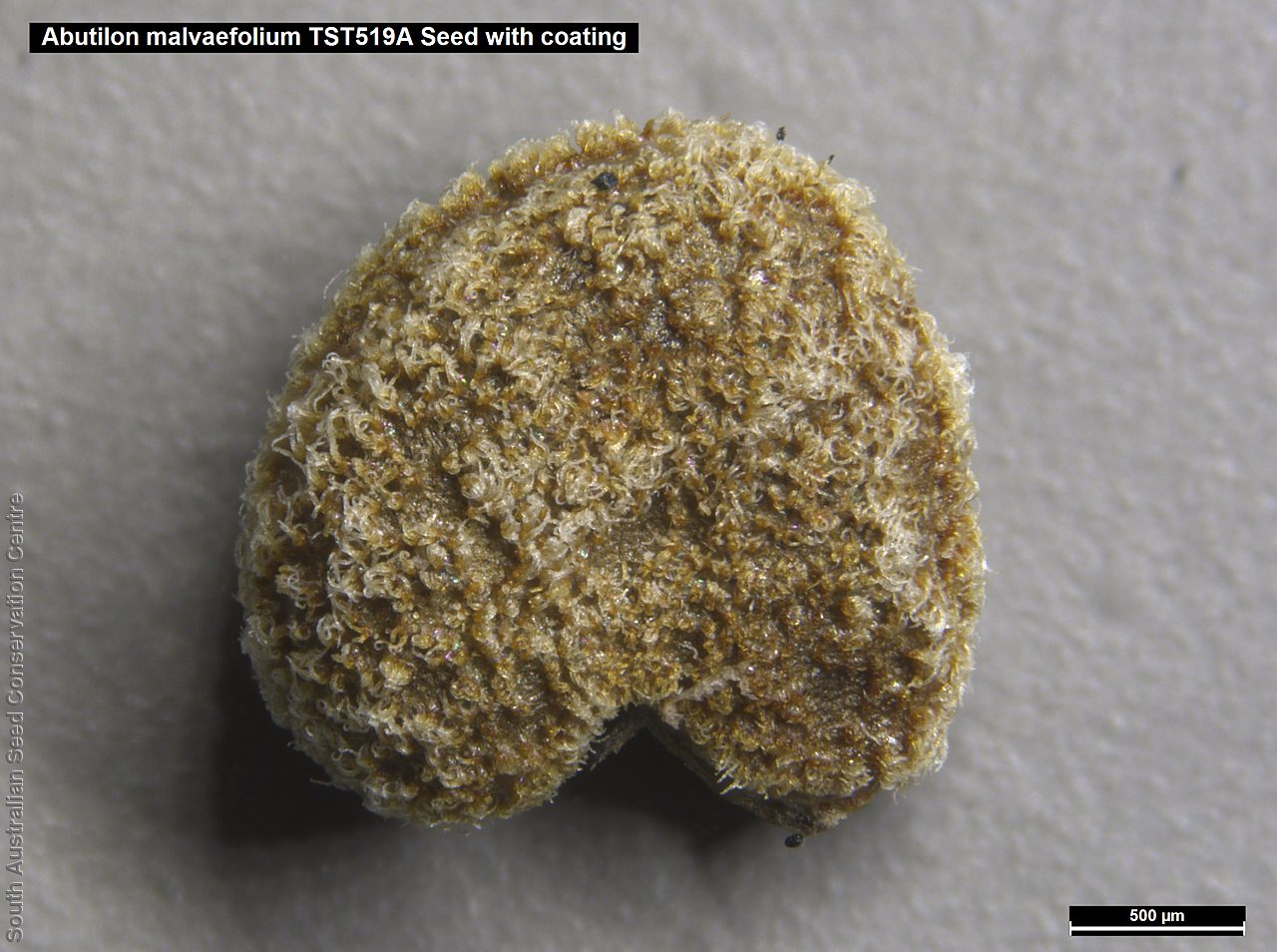
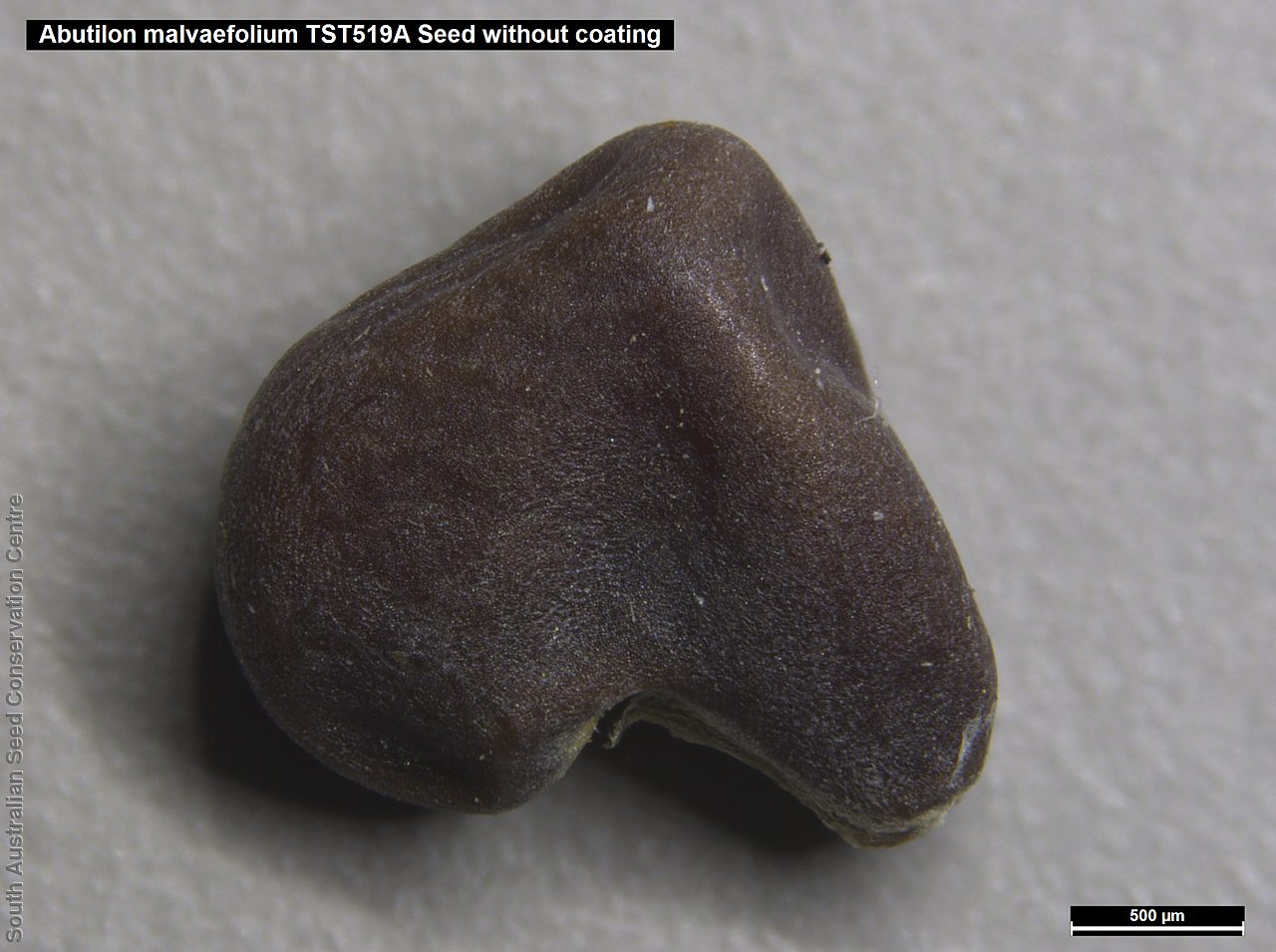
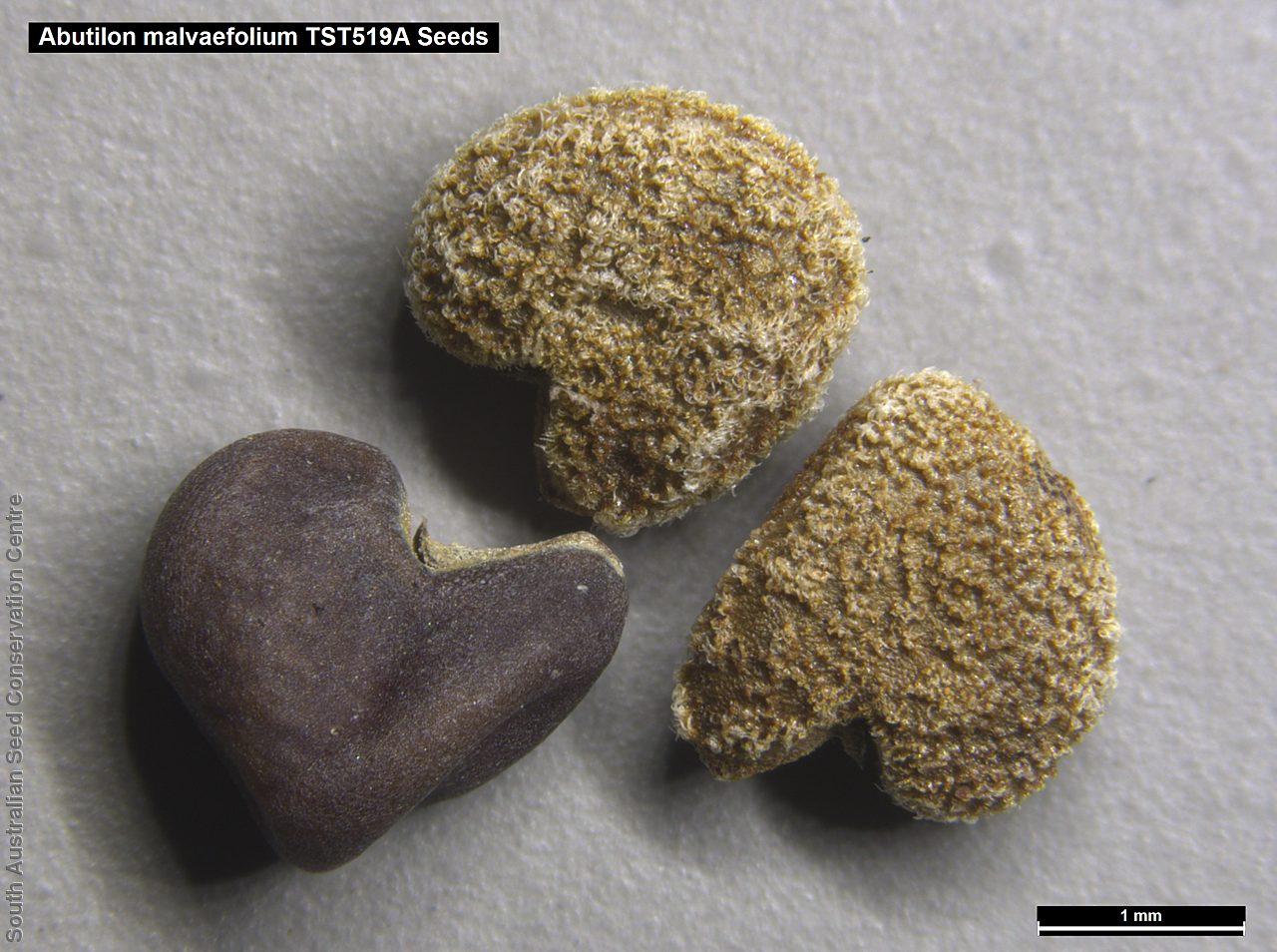
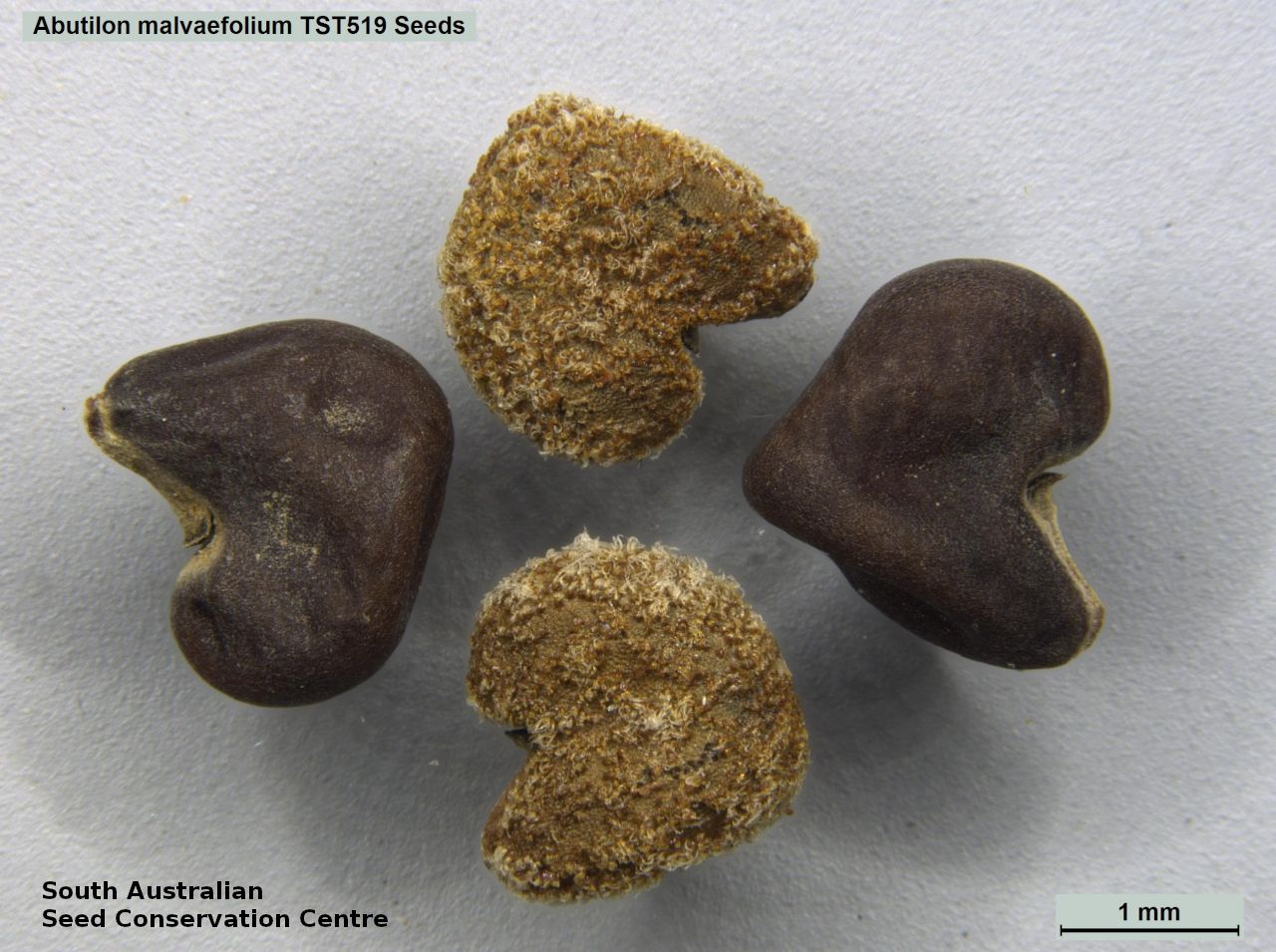
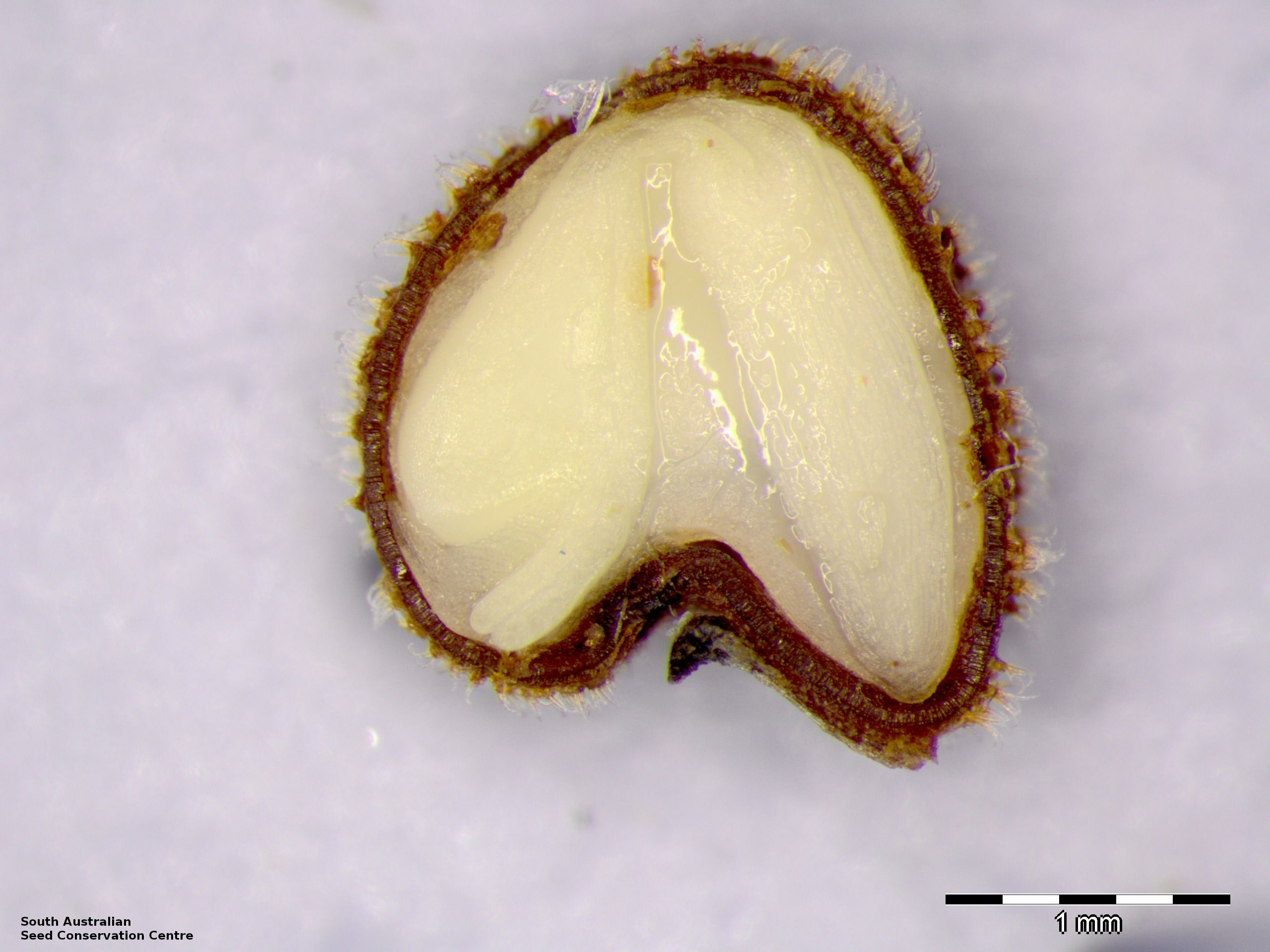
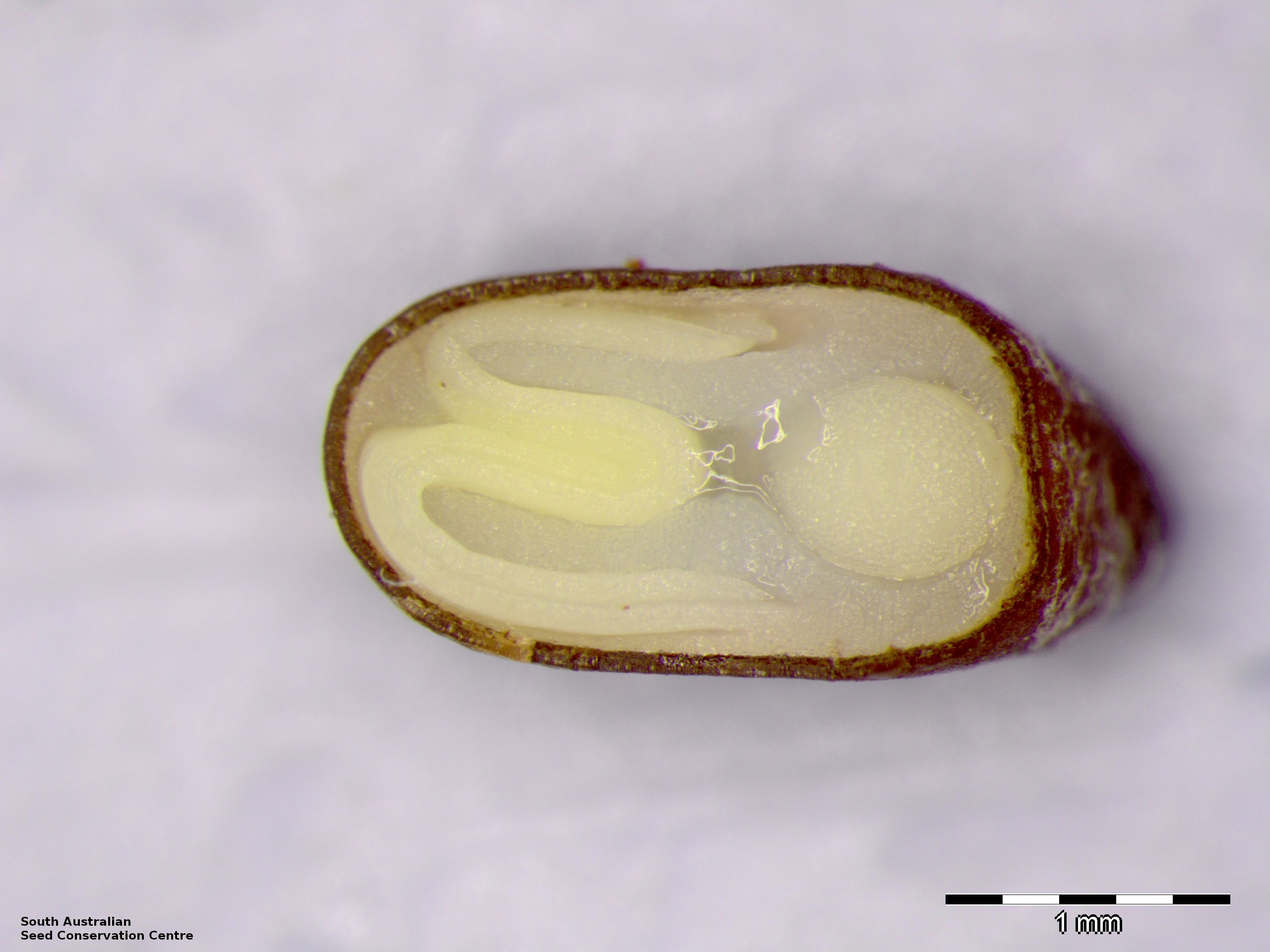

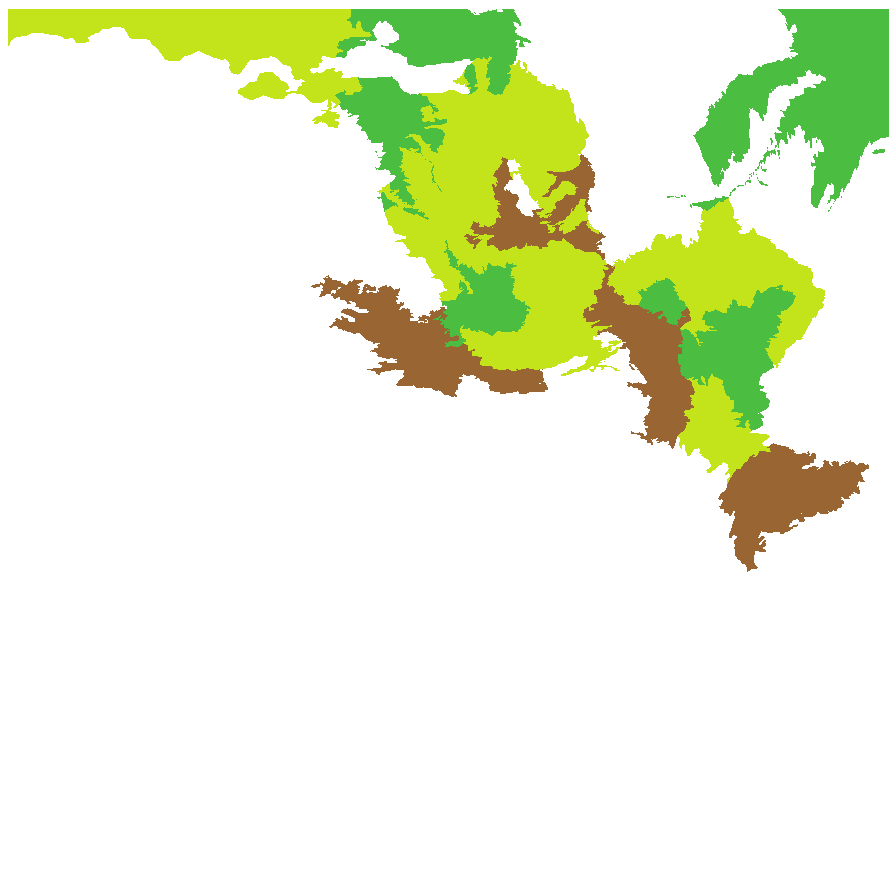
Prior names
Abutilon oxycarpum var. malvaefolium
Abutilon malvifolium
Common names
Mallow Lantern-bush
Scrambling Lantern-bush
Etymology
Abutilon from the Arabic 'aubutilun' used for mallow-like plant and quoted by the Arabian physician Avicenna as belonging to this or some allied genus. Malvaefolium from 'malva' the genus and Latin 'folium' meaning leaf; referring to the leaves of this species resembling those of the genus Malva.
Distribution and status
Found scattered in the arid interior of South Australia. Also found in Western Australia, Northern territory, Queensland and New South Wales. Native. Scattered but common in South Australia. Common in the other states.
Herbarium regions: North Western, Lake Eyre, Nullarbor, Gairdner-Torrens, Flinders Ranges, Eastern, Eyre Peninsula, Murray
NRM regions: Eyre Peninsula, Northern and Yorke, South Australian Arid Lands, South Australian Murray-Darling Basin
AVH map: SA distribution map (external link)
Plant description
Small shrub to 30 cm high and sometimes with the branches spreading close to the ground. Leaves ovate, covered with hairs, usually with 3-5 very shallow lobes to 4 cm long, on long slender stalk. Flowers yellow from February to November. Fruits are papery capsule with 5-10 segments. Seeds are reniform seeds to 2 mm with tow different texture, black smooth surface and a brown surface covered with fine curved hairs. Seed embryo type is folded.
Seed collection and propagation
Collect seeds between September and November. Collect mature capsules, those that are turning pale straw colour and contain brown seeds. Place the capsules in a tray and leave to dry for two weeks. Then rub the capsules gently by hand to dislodge the seeds. Use a sieve to separate the unwanted material. Store the seeds with a desiccant such as dried silica beads or dry rice, in an air tight container in a cool and dry place. From one collection, the seed viability was high, at 88%. This species has physical dormancy that needs to be overcome for the seed to germinate (e.g. nicking or softening the seed coat).
| Location | No. of seeds (weight grams) | Number of plants | Date collected | Collection number Collection location | Date stored | % Viability | Storage temperature |
|---|---|---|---|---|---|---|---|
| BGA | 550 (1.17 g) | 10 | 3-Apr-2007 | RJB71363 Eastern | 19-Sep-2008 | 100% | -18°C |
| BGA | 4,300 (9.19 g) | 50+ | 25-Sep-2008 | TST519 Lake Eyre | 20-Jul-2009 | 88% | -18°C |
Number of plants: This is the number of plants from which the seeds were collected.
Collection location: The Herbarium of South Australia's region name.
% Viability: Percentage of filled healthy seeds determined by a cut test or x-ray.